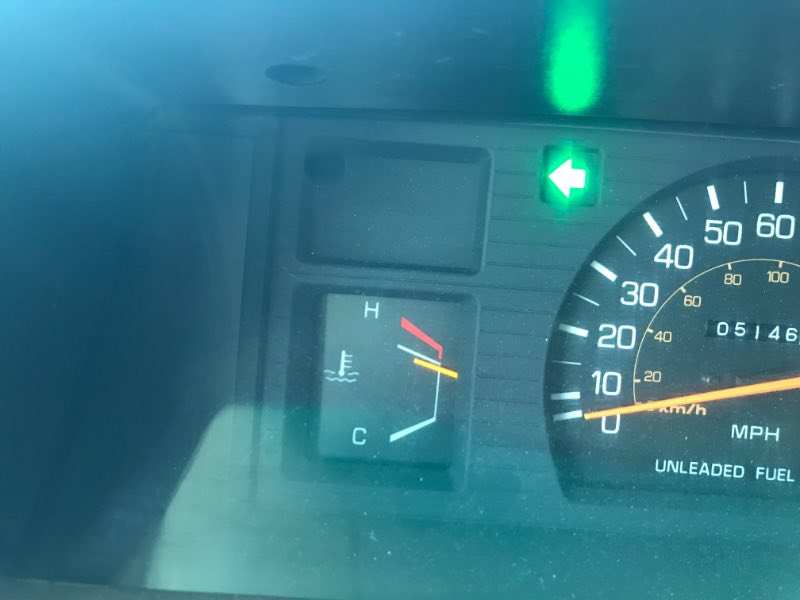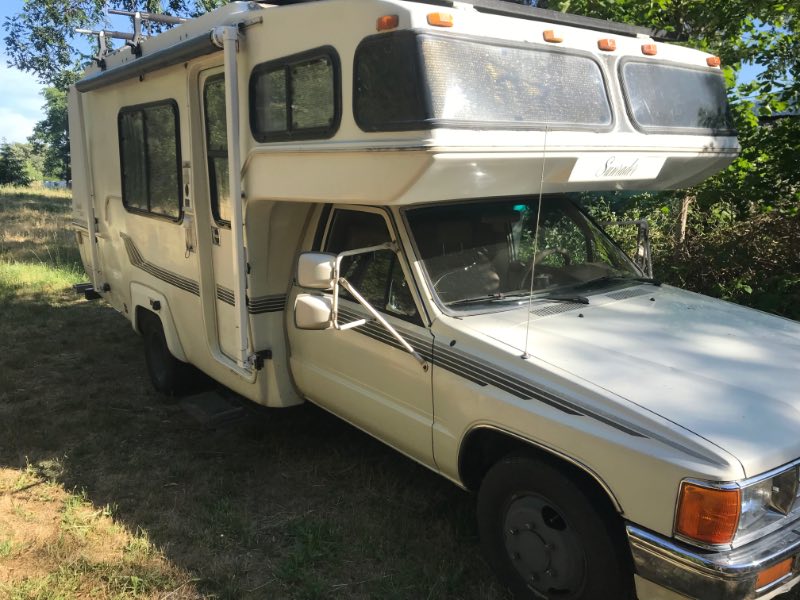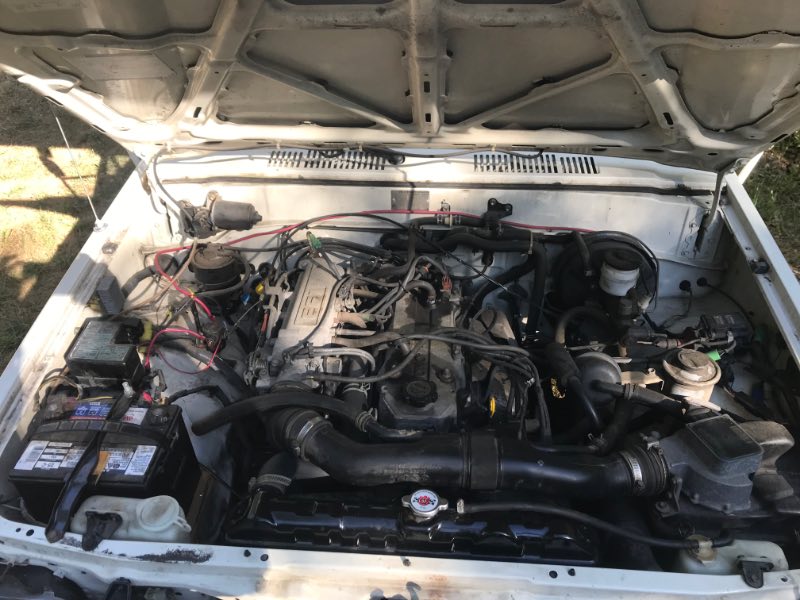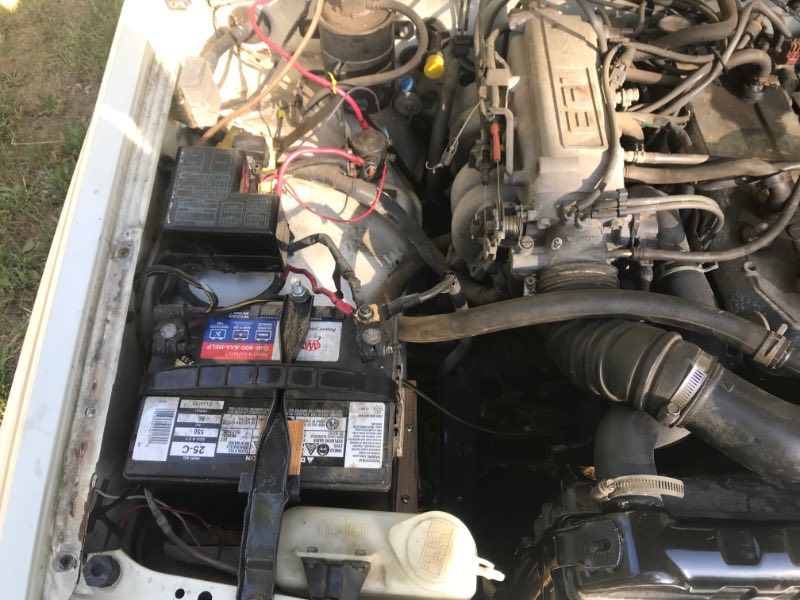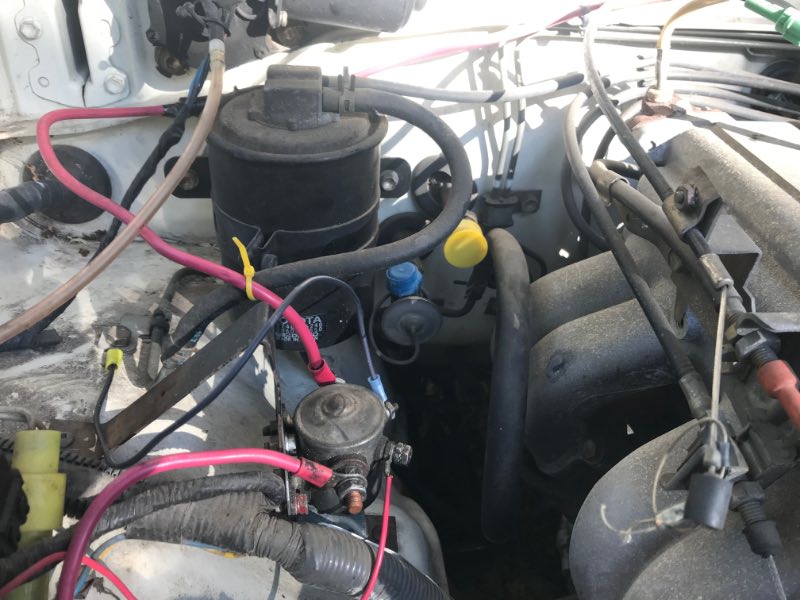-
Posts
59 -
Joined
-
Last visited
YoungSage's Achievements
Rookie (2/14)
-
Rare
-
Rare
-
Rare
-
Rare
-
Recent Badges
-
No. It’s a result of my recent work. Unfortunately. The rest of the window is tight to the fiberglass - butyl squooshed out on all other places. The lower corner is the only gap. I have ProFlex and butyl tape to work with. Not sure which to use. Leaning toward ProFlex. I had planned to use ProFlex over the entire seam of the window, sealing in the butyl all the way ‘round.
-
Hello Friends, I have recently removed, cleaned, and re- attached the largest window in my Sunrader adding butyl tape. Unfortunately one of the lower corners of the window has a fairly large, 1-2 cm gap. What would be the best way to seal this gap. I have added screws to the flange on the inside of the coach to try and suck it in more but it does not go further. The rest of the window is tightly sealed and the butyl tape is tight to the fiberglass - it squooshed out all the way around, except for this one corner. It is a lower corner as I mentioned. I am thinking of just mashing in some additional butyl and then using flex seal over it, or perhaps just straight flex seal squooshed in there would be better. Not sure. Im open to and would appreciate any thoughts any of you might have. Some pictures:
-
Update: I replaced the fan with a flex fan from LCE engineering as it sounded like it might move more air. Some have said I should switch this out for a new clutch fan. Any experience here with the LCE flex fans? I replaced the sending unit for the gauge on the dash. I put in a 170 degree thermostat. Same issue. Overheating on grades (see photo documentation). I spoke with a man at 22RE Performance in Chico, CA. After hearing my overheating story he asked me, “you didn't put a CSF radiator in there did you?” To which I answered, “Yes. A three-core one. Top dollar.” “That’s your problem”, said he. So… I am now zeroing-in on a different radiator option to the CSF as that fits with the timeline of this story and the title of this thread. This was a SUDDEN ONSET overheating situation, initiated by the installation of the CSF radiator. I am in discussion with the fine people over at Mishimoto Radiator and am looking at their all-aluminum “race radiators” - about as pricey as the CSF but I think maybe a solution for me. The other option I was considering was finding a radiator repair place to flush, clean, and repair my old radiator and have that one re-installed. Another option is to get one of the OEM $119 dollar, plastic/aluminum radiators. THree options I have before me at present. Does anyone have any thoughts on the most bomber radiator for the 22RE (auto trans) that is NOT a CSF? I’d love to hear some thoughts on this. I’m including a picture of the gauge after my most recent test, climbing Siskiyou Pass with the new 170 degree thermostat, sending unit, and flex fan.
-
Hello Friends, Current possible solutions to my overheating situation are these: - I have ordered a new coolant temperature sending unit. Perhaps the one from 1988 suddenly began giving inaccurate readings after I got all of this work done. If I don’t want to use the original temp gauge in the dash and was more keen to get an accurate numerical readout, why wouldn’t I just poke a sensor from a mechanical water temp gauge in that hole instead and forego the stock gauge on the dash? Has anyone done this? Are there adaptors that need to be employed? - If I wanted to have both the stock gauge operational and have an additional gauge with exact degrees, where would be the best place to mount the sensor for the mechanical gauge? I have heard of people splicing them into the upper radiator hose and also have heard there are water necks that have a port in them for a sensor. My water neck does not have a port but perhaps I could acquire one. Again, the increase in heat of my engine was a sudden onset. It did not get anywhere near this hot before I had the work done. I suspect it has something to do with the new radiator (CSF - apparently known for meticulous quality control), the new thermostat, or perhaps something to do with the removal of all Air Conditioning components. Is there a relationship/point of connection between the AC system and the cooling system of the 22re? And lastly, I ordered a new fan clutch and am planning on replacing the old one with this new one. Here’s a picture of what I believe is the temperature sending unit for the dash gauge. Again, many thanks for your thoughts and reflections. I am indebted.
-
Thanks Scott iv. I don’t recall hearing the fan engage profoundly and loudly now that you mention it. I will investigate. What after market coolant temperature gauge do people recommend? I believe I would prefer the mechanical style and feel that the best place to deploy it would be the upper radiator hose, employing one of these:
-
Im overwhelmed with these incredibly helpful responses and encouragements. Thank you team. I will stay the course and move slowly on this. THank you Idaho Doug for these wise words: “I know it's tempting to one day decide to "get it over with" and write a $3000 check, but I think you're still in the "what's going on" phase. Find the problem. Then take appropriate action. The 22RE is not known for head gasket issues. I still have suspicions on the fan clutch, the thermostat, and the dash guage regarding your "overheating". If I were spending your money, I'd simply buy an aftermarket coolant temp guage and then see what the ACTUAL temps are. If high, then buy the kit and send oil to Blackstone, test the thermostat. If still no issue found, replace the fan clutch (is your shroud still in place, btw?).” Yes. Fan shroud is still in place. I will get an aftermarket coolant temp guage. If high I will send oil to Blackstone and then test the thermostat. I have a fan clutch but it seems healthy. Here’s a video of the fan stopping suddenly after turning the engine off: IMG_5161.mp4
-
I have a theory now which I think might explain the situation: - back in 2018 while working in Montana, I noticed that Louise was running too hot so I had a new three core all-metal radiator installed. At this time the AC was still working and I was using it periodically. Some cracks appeared in the top of the radiator soon after installing it. I attempted the patch with JB weld which was never too complete. She still leaked a little. Not much. I drove on. Until I noticed the heat being too high again so I took it in this time about a month ago and got another radiator installed of the same metal 3 core variety and then I noticed even more severe heat in the engine. This was when I reached out to you all and began this thread. Here’s what I think happened: - the head gasket was leaking back in 2018 in Montana, causing enough pressure to build up in the system until the radiator cracked - thus letting out some of the pressure and somewhat equalizing the pressure in the system. Now, with this recent tight, uncracked radiator the head gasket is still leaking pressure into the system which no longer can leak out of the new, intact radiator, thus causing more severe heat build up. So… I am now looking for a shop to replace the head gasket. The mechanic who has been working on it does not do head gasket jobs. I have two questions: (1) does anyone have a shop to recommend for head gasket work on a Toyota motor home in Southern Oregon? Medford, Gold Hill , Grants Pass? One shop I reached out to today in Phoenix, OR quoted me an hourly rate of $170 an hour to do the work. After my shocked response they said they could do it for $150/hr. Apparently this is their fee for motor home work. As they are working on the trucks motor and not really working on the motor home-ish parts I thought this was a little much. Not sure. Be curious to hear anyone’s thoughts on this. (2) while the head is off for this job, are there other procedures that I should have done while Louise is in such a dis-assembled state? Again, deepest thanks for your thoughts and wisdoms with this ongoing situation.
-
Thank you extech, Linda S., and Scott IV. Extech: would an IR heat sensing gun be the tool to ascertain the health of the radiator? To check for cool spots when running? Linda S: so mebbe dilute with water. Have you heard of this REdline water wetter? Scott iv: no leaks at water pump. The fan seems to run constantly but never kicks into a higher/louder phase. Thanks again!
-
YoungSage started following 22re Overheating after major surgery
-
Friends, I have an 88Sunrader. OD=105kmiles. 22re. “Louise”. I took her into a mechanic here in Southern Oregon as she was running a little warmer than I would like - on climbs nearing 3/4 but never got to 3/4. On flat roads in Summer the gauge was sitting just over half. It never overheated but just seemed to be running a little hot. So I took her in to get some work done. The radiator had a few hairline cracks in the top which I had patched with JB weld and they were holding. I figured a new radiator was in order - so this May I had the following work done: List One - “things having to do with the cooling system” - new three-core all-metal radiator - new radiator cap -new upper radiator hose - new lower radiator hose - new thermostat (JDM) - Im not sure if it was tested before he installed it - putting in a pot of water on the stove to check for opening etc. - fresh coolant (green) - removed Original Air Conditioning system (non-operational since 2015) List Two - “things seemingly not related to the cooling system” - new front seal - new oil pump seal - new transmission cooling lines - reconfigured original battery system by removing the fiberglass box for carrying two batteries under the hood. Found homes for components that were attached to the double battery box. - changed out rear differential fluid - drained and refilled Automatic Trans Fluid - new fuel filter - new power steering pulley (tensioner) bearing - replaced alternator belt. With all of this finished I decided to head south to California for a week. The day I set out the forecasted high was 78 degrees. On my way up Siskiyou Summit (a long steep climb I had done many times before) I immediately noticed that the heat gauge was up to three quarters and was approaching the white line that comes just before the red section on the gauge. Before getting all this work done, my engines temperature had NEVER gotten to three quarters. This was strange new territory. Very peculiar. I turned on the heater and kept an eye on the gauge. It never overheated or got into the red zone but it got close. Short story, I made it down and back on this trip. Upon returning I called the mechanic and he said he thought it was a blown head gasket and he was out of ideas, wanting to send me off to another mechanic. For real? These high temperature gauge readings never happened before I got the above work done. Other pertinent information: - engine seems to run fine. Same amount of power as usual and it is consistent. - no white smoke coming out the tailpipe - oil is oil-colored and NOT milky,frothy, etc - I took off the radiator cap when cold, started it and ran for 15 minutes - looked for bubbles rising in the radiator - saw no bubbles. - fan comes on immediately - before starting I moved the fan with my hand - felt some resistance - hard to explain how much - did not seem overly stiff or loose. Suspicion List: - something’s out of whack from the removal of the AC system - What’s up with the new thermostat? - fan clutch problem. Just to beat that horse I will say again: my temperatures were FAR LOWER before I had all this work done. I find it difficult to believe that getting this work done has coincided with a failed water pump, a blown head gasket, or a faulty fan clutch - although the fan clutch could have been the original problem that was causing it to run just a little hotter than normal before I took it in. I read two other stories shared here with similar symptoms described and I believe both of them were fan clutch related. Other solutions I am considering: - drill some holes (two 1/8” ones) in the thermostat? - I am curious to know if anyone has experience with this - check the level of the oil in the fan clutch and potentially add some of a higher or lower viscosity. Thanks for any ideas you may have. The knowledge base here is prodigious as is the depth of good will. Muchas Gracias.
-
Hmmm.






